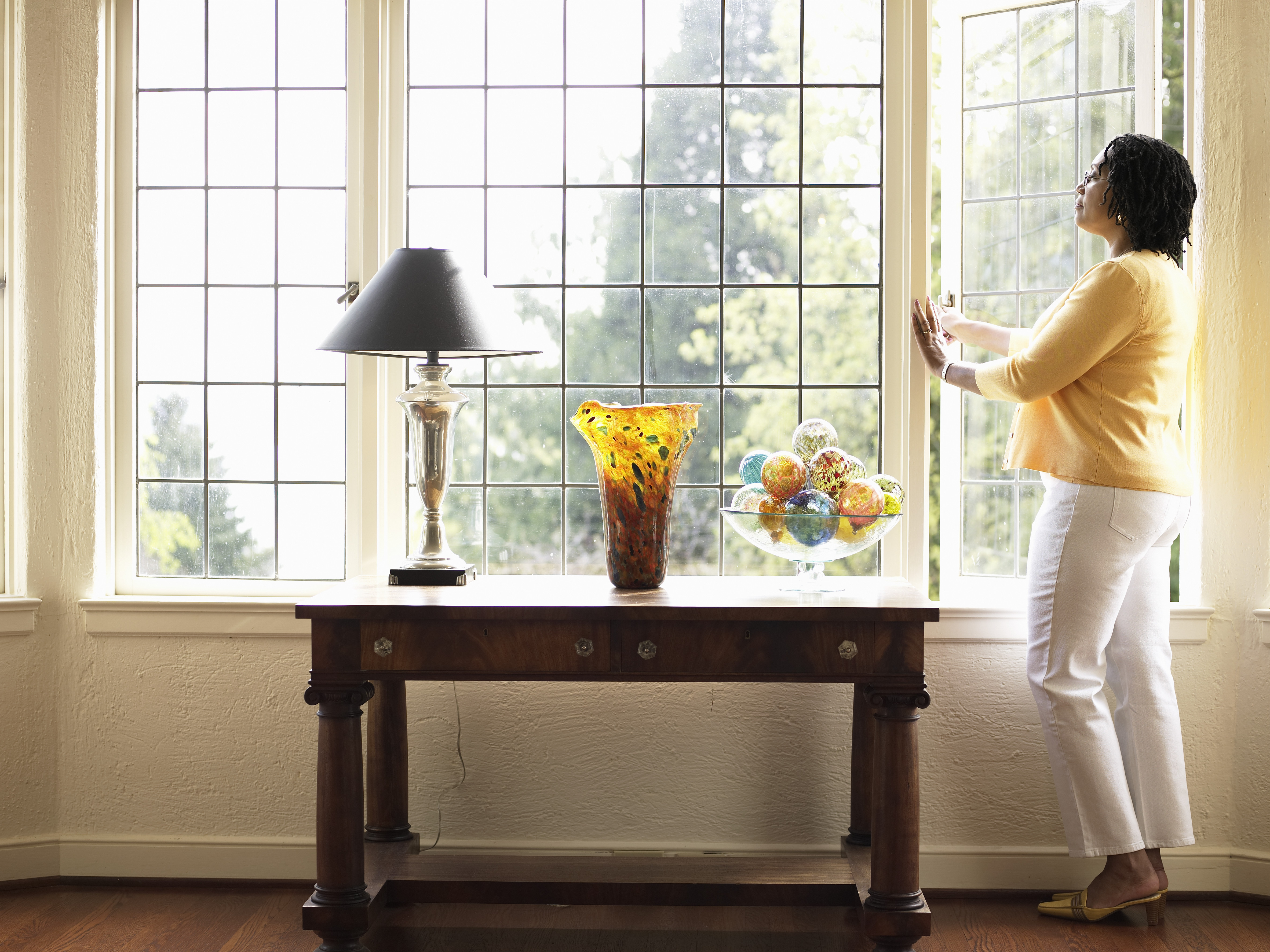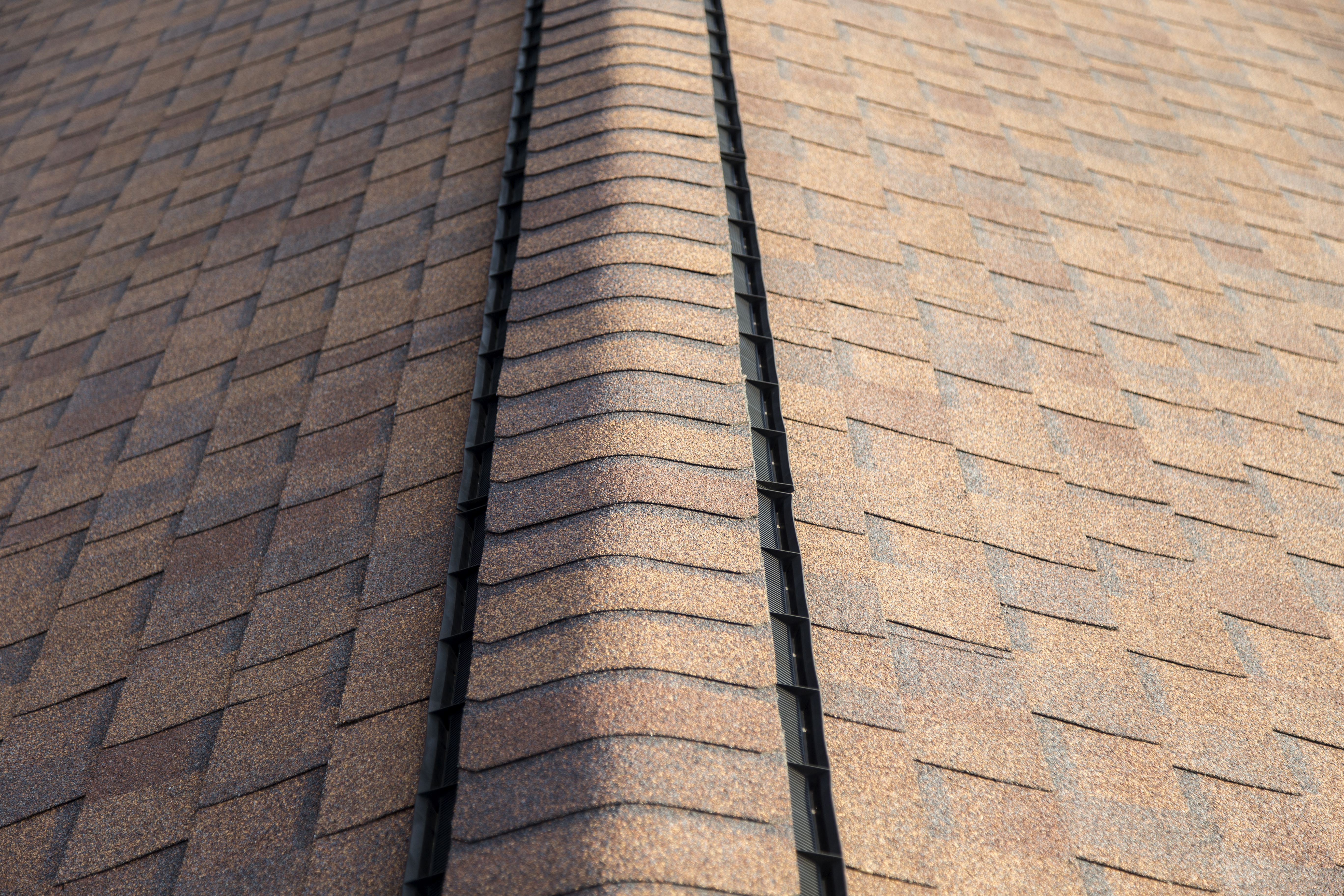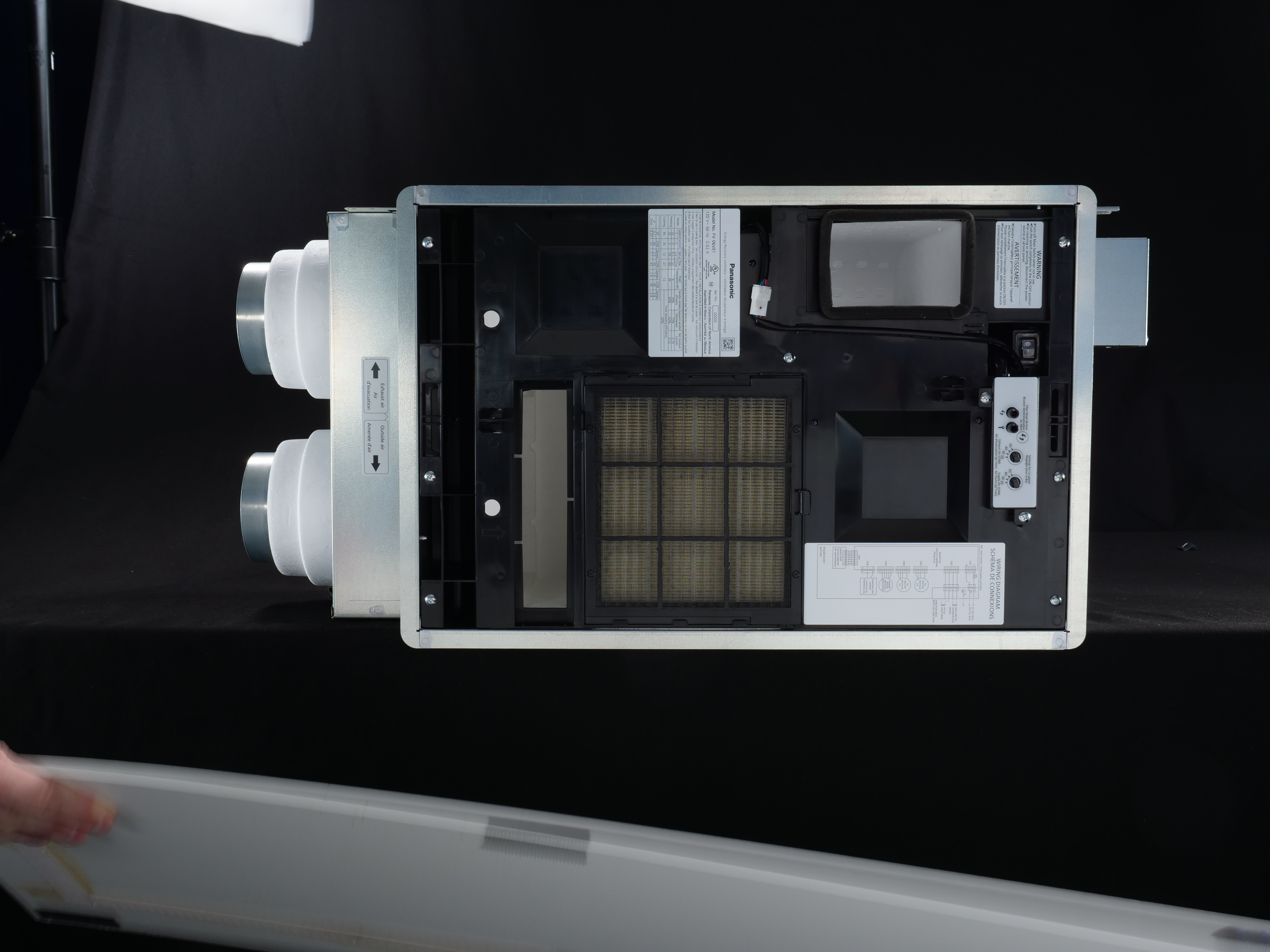When homeowners consider potential upgrades, they typically don't think about improving the indoor air quality in their homes - but that can be a mistake. As this article explores, ventilation plays an important role in the air quality, moisture level and even smell of your home. Products such as energy recovery ventilators and exhaust fans can make a big difference to your health and quality of life in your home. When you're ready to upgrade your home's ventilation, Panasonic experts can help you explore the WhisperGreen Select or other ventilation products that are best suited for you.
While home ventilation is often something that homeowners assume will have been taken care of at the initial stages of a house construction, in older properties it is highly likely that there are some improvements that can be made.
Whether you are fed up with looking for the best ways to clean mold off walls or need a more efficient way of whisking away cooking odors, good ventilation is key to a house that feels like a fresh, comfortable place to spend time in.
In this handy guide, we explain the very best ways to bring a breath of fresh air into your home, no matter whether you are dealing with a fixer-upper or a new build that just doesn’t seem to be functioning as you'd hoped.
Why look at the best ways to improve ventilation in your home?
While ventilation might not be the most glamorous of topics out there, particularly when compared to the more exciting side of house design, such as planning a kitchen or choosing your paint colors, it is key to a home that you enjoy living in. Not only can it help prevent issues with mold, but it can help anyone wondering how to get rid of condensation inside windows, too. 'Ventilation is essential to maintaining good air quality within the walls of your home,' says Alessandro Ronfini of DEMO Architects.
“With a growing awareness of the impact indoor environments have on our health and well-being, it's crucial to ensure that our homes are equipped to provide ample ventilation,” agrees Christine Marvin, chief marketing and experience officer at Marvin. “Fresh air not only invigorates us but also plays a vital role in maintaining indoor air quality, reducing the risk of airborne virus transmission, and mitigating the build-up of pollutants like carbon monoxide and radon.”
What are the best natural home ventilation solutions?
Home ventilation generally falls into two categories – natural and mechanical. Both are really effective ways of removing stale air and introducing fresh air, but there are key differences. For many people, a combination of the two can be the best solution.
Natural ventilation, also sometimes referred to as passive ventilation, relies on forces such as wind, air flow and thermal buoyancy to circulate air in and out of a home.
'Natural ventilation is an effective and cost-saving way to bring in fresh air, cool a space, and create a comfortable interior,' says Alessandro Ronfini. 'However, its energy efficiency depends on the climate zone in which a certain building is located. Natural ventilation paired with traditional systems cooling or heating a space often leads to losing conditioned air, thus energy and money.
'Also, natural ventilation does not offer any way to control the quality of the air, which, especially in urban environments, can be counterproductive to improving interior air quality,' continues Alessandro.
1. Open the windows
Healthy home upgrades really can be as simple as just flinging open your windows every day.
'It’s often difficult to tell when your indoor air quality is poor, so I recommend opening windows for at least five minutes daily to facilitate air circulation and reduce indoor pollutants,' says Christine Marvin. 'However, longer periods of 15 to 20 minutes are even better for ventilation.'
While this might seem like an obvious one, there are a few things to bear in mind if you are planning on relying on this alone for your home ventilation.
'Natural ventilation is often too dependent on the occupant's initiative and can lack consistency,' points out Alessandro Ronfini. 'For example, windows offer a great and cost-effective way to ventilate a home. Still, they only work if occupants remember to open them, and in many climates, that rarely happens when the outdoor temperature is too hot or too cold.'
2. Create a cross breeze
While we’re on the topic of opening up your windows it is worth mentioning cross ventilation. In short, this method relies on the placement of your windows and doors and how and when you open them – and is a great home remedy to stay cool.
Cross ventilation happens when there are differences in pressure between one side of a house and the other – air is drawn into the house on one side and drawn out on the other. In its simplest form, this can be achieved by opening the windows on the side of your house that the wind is coming from before opening the windows or doors on the opposite side of the room.
In cases where you only have windows on one side, opening doors on the opposite wall to allow air out into the next room with a window should do the trick.
What you are basically doing here is creating a current of air that sweeps through the room, taking warm, stale air with it and, finally, out of the opposing window.
3. Fit a ceiling fan
While it is true that fans by themselves don’t actually remove stale air, they can still help when it comes to ventilation.
'Combining window ventilation with other tools like ceiling fans, exhaust fans and air filters can significantly impact air quality,' says Christine Marvin. 'Ceiling fans, for instance, play a vital role in circulating air efficiently, with a counterclockwise rotation in summer months to create a cooling breeze.'
4. Set up stack ventilation
Although it might sound a little bit complicated, the way in which stack ventilation systems actually work is pretty simple.
'Passive stack ventilation (PSV) is a natural, cost-effective way to ventilate,' explains Jeremy Brady, a chartered surveyor who spent years working as a domestic energy assessor. 'It doesn’t rely on electricity, so reduces electrical load requirements – plus it should be maintenance free.
'Passive ventilation relies on the principle that warm air rises. Wind blowing across the face of your roof or walls causes negative pressure which then sucks out the warm air,' further explains Jeremy. 'At the most basic end of the spectrum, you could open a skylight or a window on the top floor of your house and the warm air would get sucked out. As this happens, cool air will be sucked in through trickle vents in your windows and gaps around services to replace it.
'PSV expands on this, providing ventilation through extract vents in the wet rooms of a property such as bathrooms and kitchens which are routed vertically to the outlet vents at the ridge of your roof. Replacement air is supplied by trickle vents in your windows or walls.'
Mechanical home ventilation methods
Next we come onto mechanical ventilation methods. These are sometimes also called ‘controlled ventilation' and, unlike natural solutions, these rely on fans that create positive or negative pressure within the home and often involve incorporating ductwork into the building that balances the system.
'Modern mechanical ventilation systems are very effective because they run 24 hours a day, constantly bringing fresh air into a home and extracting stale air,' explains Alessandro Ronfini. 'They often include a filter so that pollutants, pollen and bugs are left outside.
'The most effective systems are ERV (Energy Recovery Ventilation) and HRV (Heat Recovery Ventilation), which, through a heat exchanger, allow the transfer of temperature between the incoming and outgoing airflow, thus dramatically reducing energy loss and saving money.'
1. Fit bathroom exhaust fans (in the right places)
Exhaust fans are probably the best known type of mechanical ventilation, often seen fitted in the walls or ceilings of bathrooms or other wet rooms. Range hoods also fall into this category. They suck stale, humid, moist air out of a space and take it, through ducting, to outside, neutralizing kitchen odors along the way. This can help prevent mold, condensation and remove odors too.
The effectiveness of any kind of exhaust fan largely relies on their positioning and good maintenance.
'Bathroom and kitchen exhaust fans serve as ‘spot’ ventilation, meaning they are designed to ventilate air from specific areas,' explains Marco Radocaj, owner of Balance HVAC.'However, their placement is often suboptimal – frequently in the middle of bathrooms. Many people mistakenly believe these fans actively pull air from the room, but this isn't the case. Instead, think of it like a floor drain in a shower: the water flows slowly and smoothly to the opening rather than being actively sucked down. This makes the exact location of exhaust fans crucial.
'For optimal shower ventilation, place the exhaust fan directly over the shower or bath. A centralized fan within the tall shower enclosure will effectively capture and remove steam, reducing the loss of conditioned air from the rest of the bathroom. For toilets, position the exhaust fan near or behind the toilet to effectively remove odors at the source. This prevents unwanted smells from rising and lingering in the bathroom air.
'Another important consideration for bathroom fans is door usage during operation,' continues Marco 'In modern homes with open bathroom designs in primary suites and guest rooms, closing the bathroom door helps the exhaust fan work more effectively. It limits the amount of excess air from adjoining rooms, allowing the fan to focus on removing unwanted air from the bathroom.'
2. Install your range hood carefully
When it comes to developing your extractor hood ideas, location is key to getting them right.
'Range ventilation can be more challenging, especially in kitchens with islands or large open spaces,' explains Marco. 'Misplaced range hoods often fail to capture all cooking particulates. Positioning these hoods closer to the cooktop, against a wall, or ideally in a corner, ensures more efficient capture and removal of cooking byproducts.'
3. Fit an Energy Recovery Ventilation (ERV) system
HVACs (heating, ventilation and air conditioning) systems are one of the best ways to ensure good indoor air quality, and there are several different options out there for homeowners.
An ERV is a mechanical, air-to-air ventilator that swaps stale indoor air with fresh outdoor air, transferring heat and moisture from one stream of air to the other. Modern houses might be great in that they prevent heat loss, but when homes are so tightly sealed, there can be problems with air quality and excess humidity.
'We advocate for passive design elements, which do generally create a tight seal to maintain energy, but a home still needs to breathe!' explains Sarah Jefferys, founder and principal at Sarah Jefferys Architecture + Interiors. 'We install an ERV, fresh air exchange system in each of our passive homes to provide fresh air throughout the homes at all times. These, along with natural windows, ensure proper ventilation while maintaining energy efficiency.'
4. Consider HRV to reduce humidity
HRV (heat recovery ventilation) is really similar to ERV but rather than transferring both heat and moisture, it only transfers heat. HRV uses the heat in the stale exhaust air it is taking away to preheat the fresh air it is bringing in. If you live in an area of high humidity, you probably won’t want an ERV as they bring more moisture in, in which case an HRV will be better. If, however, you are in a region where the outdoor air is much more humid or drier than it is indoors, an ERV system will be better.
Whether you opt for an ERV or an HRV, make sure you know how to clean your HVAC system properly as this will ensure it remains doing its job well.
FAQs
How much does it cost to install an ERV or HRV?
The only real downside to mechanical ventilation, as opposed to natural ventilation, is that it will cost more.
'The cost of an ERV/HRV can vary from a few hundred dollars to tens of thousands, depending on the size of a home and the type of installation,' explains architect Alessandro Ronfini. 'The most cost-effective ERV/HRV are ductless systems that work as a network with fans on the opposite sides of a home alternating between suction and extraction, thus guaranteeing that every room in a house gets its supply of fresh air.'
As well as the initial cost of buying a system and having it installed, it is important to bear in mind how this compares to what it will cost you to run – some systems can actually help you make savings in the long term.
'We use energy-efficient, ductless heating and air conditioning systems to maintain a consistent and comfortable home year-round. Ductless systems use only the energy they need to cool or heat a space,' explains Sarah Jefferys, architect. 'Sophisticated models use sensors to continually respond to changes in temperature, rather than wasting energy by starting and stopping. In addition, they take up little space, can easily be integrated into a home, and are very quiet.
These systems use significantly less energy – perfect for those on the lookout for eco home improvements they can make – plus typically cost less than traditional ducted systems.' The kind of energy you use to power your ventilation system will also have an effect on running costs – as well as the environment.
'When locations allow, we use Geothermal for home mechanical systems, extracting the earth's natural temperature to heat and cool. The energy source is free, and energy consumption is greatly reduced using Geothermal while creating a very consistent, comfortable, microclimate inside. While the upfront costs for a greener HVAC system may be higher than traditional systems, the long-term savings in energy costs can offset the initial investment.
'On a simpler note, opening your windows and doors during cooler hours does wonders!' concludes Sarah.
While you are upping the ventilation in your house it is also worth looking into other eco features that add value to a home. Everything from your choice of windows and doors to your heating system will have an effect not only on how comfortable you find living in your property, but also on how attractive it will be to prospective buyers should you one day move on.
This article was written by Natasha Brinsmead from Homes and Gardens and was legally licensed through the DiveMarketplace by Industry Dive. Please direct all licensing questions to legal@industrydive.com.








